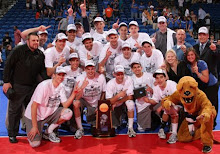GRADE 1 Symptoms: tightness in the thigh but still able to walk properly, not much swelling, bending of the knee against resistance does not cause significant pain
An Athlete Can: use compression bandage and heat
A Sports Injury Specialist Can: use sports massage techniques, ultrasound or electrical stimulation, and prescribe a rehab program
GRADE 2 Symptoms: cannot walk properly, twinges of pain during activity, may swell, pressure causes pain, might not be able to fully straighten knee
An Athlete Can: apply ice, compression, elevate, use crutches for 3-5 days
A Sports Injury Specialist Can: use sports massage techniques, ultrasound, electrical stimulation, and prescribe a rehab program with stretching and strengthening
GRADE 3 Symptoms: unable to walk without crutches, sever pain, bad swelling will appear immediately, static contraction will be painful and might produce a bulge in the muscle, and you will be out of competition for 3-12 weeks
An Athlete Can: seek medical attention immediately, RICE
A Sports Injury Specialist Can: use sports massage, ultrasound, electrical stimulation, prescribe and monitor a rehab program, and operate if necessary
Anatomy: Hamstrings; semitendonosis, semimembrinosis, biceps femoris
Prevention: a consistent stretching and strengthening program will help, good flexibility also reduces the risk of strains, as well as warming up properly.
Surgery: the goal of the operation is to reattach the hamstring origin to the ischium
~ neurolysis of the sciatic nerve is necessary
~ There is an extremely high success rate, over 95%












